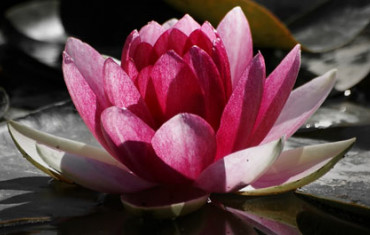A brief introduction to Bhakti Yoga - The path of devotion
sri-bhagavan uvaca
mayy avesya mano ye mam
nitya-yukta upasate
sraddhaya parayopetas
te me yuktatama matah
~Lord Krishna in Bhakti Yoga, Bhagwad Gita
"Those who fix their mind on me and only I dwell in their thoughts; and who sing my glories with love and devotion; and who have complete faith in me are the best."
In the above citation, Lord Krishna answers Arjuna's question in Bhagavad Gita, on who is an ideal Yogi (one who is in complete union with the divine). It is verily the essence of Bhakti Yoga.
What is Bhakti Yoga?
Bhakti Yoga is a Sanskrit word; Yoga means union; the only English word that can do justice to the word Bhakti is perhaps "Love," "Universal Love" or "Divine Love."
Bhakti is not what we do or have but what we are. And waking up to realize that - is Bhakti Yoga. A realization that everything is the Supreme Consciousness, nothing else exists. Losing the sense of separateness from that all-pervading Power, losing the identity that is defined by the world, and merging, diving into the vast, endless ocean of a throbbing, all-encompassing Infinite Love.
Bhakti Yoga is the lively feeling of oneness with that Spirit.
Philosophy and a brief introduction to Bhakti Yoga
It is hard to define Bhakti; one can feel it, realize it. With every breath, we sow the seeds of Bhakti. It is that love that sweeps us, soars us, and changes us forever, touching the deepest core of our existence.
Bhakti is not about seeking that love but dropping the barriers we have built within, against it. It opens the door to eternity, within us. It is the love that shines in our eyes as the light of our soul. Bhakti wakes us to realize that everything is a reflection of the Divine.
History of Bhakti Yoga
Bhakti as a form of union with the Infinite must be as old as human civilization. Formally it got recognized as a way of expressing love for the Infinite, or God, in Shvetashvatara Upanishad. Much later in Bhagavad Gita, it was considered a "marga" or a path to realizing the Ultimate Truth. It is elucidated further in Bhagwatam, as aphorisms made by Narada, in Narada Bhakti Sutra.
Flavors of Bhakti
The love towards God has various expressions or "bhava." They are:-
- Shanta – where the devotee does not express himself or herself too much, through singing or euphoric dancing but remains blissful and calm.
- Dasya – Serving the Infinite as his most faithful servant. Like Hanuman.
- Vatsalya – Loving God like one's child, like Yashoda.
- Sakhya – Loving the Infinite like a friend, Arjuna or Uddhava are shining examples.
- Madhurya or Kanta - This is the highest form of Bhakti, where God is one's lover, spouse, beloved. One achieves complete oneness with the beloved. Radha displayed this love, as did Meera or the Gopis of Vrindavan.
Bhakti – Path of devotion
In Bhakti, one can experience total freedom from fear and worry. A devotee transcends worldly sorrows and pains.
A pure devotee has no selfish desires, including the desire for liberation. Bhakti in one's heart is kindled by the grace of the Guru, by being in the company of other devotees and by reading and listening to the stories of other "bhaktas" or devotees.
"When the river meets the ocean, it recognizes it was the ocean from the beginning until the end. In the same way, the moment a devotee surrenders to the Divine; he or she becomes the Divine."
~ Gurudev Sri Sri Ravi Shankar

















